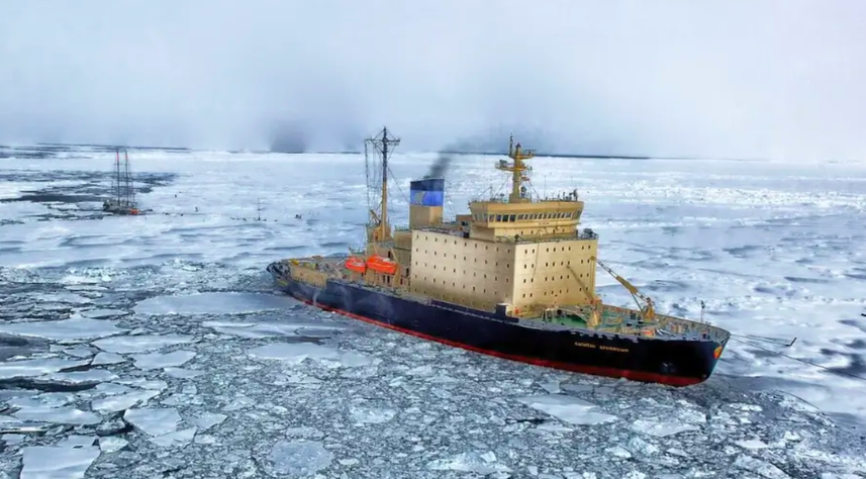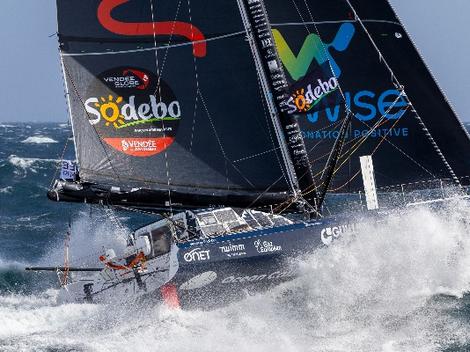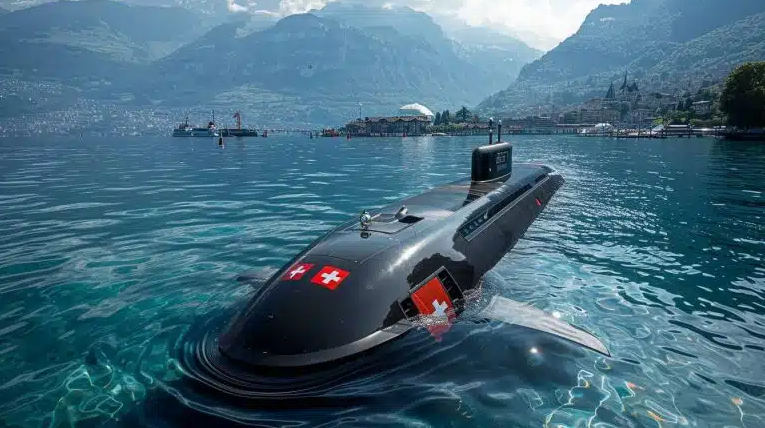Thirteen years after the adoption of a similar regulation for the Antarctic, and three years after its adoption by the International Maritime Organization, the ban on transporting or using heavy fuel oil (HFO) in the Arctic came into force on July 1. However, NGOs continue to denounce the fact that exemptions, derogations and other possibilities for circumvention make this “ban” a misnomer.

Thirteen years after adopting a similar regulation for the Antarctic, and three years after its adoption by the International Maritime Organization (IMO), the ban on transporting or using so-called HFO heavy fuel oil (more than 3.5% sulfur content) in the Arctic came into force on July 1, 2024. This was far from a consensus among environmental NGOs, who had campaigned for five years under the banner “HFO Free Arctic” to bring pressure to bear.
Rule 43A, which has been added to Annex I of the Marpol Convention, is deemed unambitious and riddled with loopholes that can simply be exploited to circumvent it, say the associations.
At the 76th session of the IMO’s Marine Environment Protection Committee (MEPC 76) in June 2021, member states approved the principle of banning the use of heavy fuel oil for vessels operating in the Arctic and near the Arctic. The text was subsequently adopted at MEPC 77.
Ban, a misnomer
For NGOs, the term “ban” is a misnomer, as the regulation is accompanied by exemptions for different categories of ships and derogations offered to IMO member states. Initially, the measure is aimed at older ships without double hulls or protected fuel tanks. It also authorizes the Arctic coastal states – Russia, Norway, Denmark, Canada and the United States – to take sovereign decisions concerning ships flying their own flags when operating in their own waters.
At this rate, the ban will not reach full speed until 2029, when there will be no more exceptions. By then, according to calculations by the NGO Clean Arctic Alliance, based on a study by the International Council on Clean Transportation, 74% of Arctic shipping would be unaffected by the new rule, while substitution by decarbonized alternatives would enable an immediate reduction of around 44% in emissions of black carbon, recognized as responsible for around 20% of the climate impact of shipping (on a 20-year basis).
According to the International Council on Clean Transportation, only 30% of shipping vessels and 16% of HFO-powered vessels will actually be banned.
37% increase in shipping in 10 years
As the date for promulgation of the new Arctic regulations approached, environmental associations returned to the attack. It’s simply not good enough that it will only be half enforced,” said Sian Prior, spokesperson for the Clean Arctic Alliance. IMO member states, in particular Arctic coastal states, must implement the Arctic HFO ban and fully enforce it with immediate effect, without resorting to loopholes”.
The Alliance, which brings together 18 associations, is concerned by the 37% increase in maritime traffic recorded by the Arctic Council between 2013 and 2023, and the 111% increase in total distance traveled over the same period. In particular, it is asking the IMO to extend the area covered by the ban to all Arctic waters up to the 60th parallel north (points on the Earth’s surface whose latitude is equal to 60° north).
Decisions made in dribs and drabs
Representatives of the shipping industry see this as a step towards better protection of the Arctic.
Some countries, including Norway, are ahead of the rule. Oslo began banning HFO in the Svalbard region in 2022. And the authorities have just imposed the first fine on a ship for breaking the rules. Canada, for its part, has announced that it will apply the regulations from July 1, with some adjustments, notably for Arctic community supply ships, which are still authorized to run on HFO until 2026.
Another battle: scrubbers and LNG
On related subjects, anti-gas campaigners have two other public enemies: scrubbers (open-loop systems) – which clean exhaust gases and thus legitimize the use of heavy fuel oil – and LNG. “Liquefied natural gas simply replaces one powerful, short-lived but high-impact climate pollutant – black carbon – with another, methane,” says Sam Prior. Experts agree that methane’s impact on global warming is more than 80 times greater than that of an equivalent quantity of CO2.
In April, the Clean Arctic Alliance delivered the conclusions of two reports it had commissioned on the impacts generated by the extraction and use of LNG as a marine fuel (LNG and shipping in the Arctic, by Energy and Environmental Research Associates, and The status and future projections of LNG production and use in the russian Arctic, by Bellona).
The NGO argues that a “diesel-based solution combined with the installation of particulate filters, as prescribed for other modes of transport”, could “rapidly” reduce black carbon emissions by over 90%.
For its part, Green Global Future, another NGO, advocates a high port tax for all ships using fossil fuels in the Arctic.
Source: Téma Transport & Logistique



